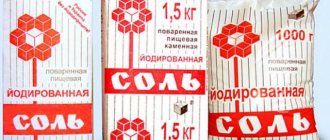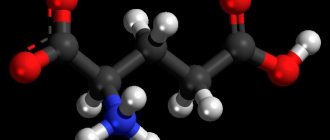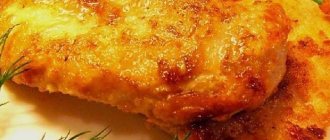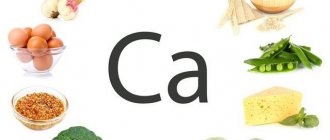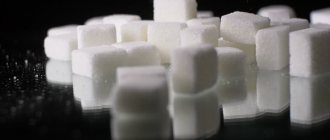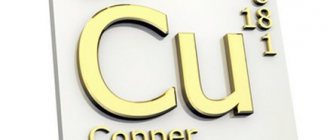Liver
If you are wondering which foods have the most copper, the answer is liver. Organic animal products such as liver are extremely nutritious.
They provide the body with large amounts of many nutrients, including vitamin B12, vitamin A, riboflavin (B2), folate (B9), iron and choline ().
Liver is also an excellent source of copper.
In fact, one slice (67 grams) of calf liver supplies your body with 10.3 mg of copper—a whopping 1,144% of the recommended daily intake (RDI) ().
However, large amounts of vitamin A in the liver can harm unborn babies. Therefore, pregnant women should avoid foods that are extremely high in vitamin A, including liver ().
Summary:
Liver is an extremely nutritious animal product. Just one piece of calf liver can provide your body with more than 11 times the RDA for copper, as well as good amounts of other important nutrients.
What reduces the amount in the body
In order not to cause harm to your health, you need to know how to correctly combine products. Egg yolk interferes with the absorption of cuprum . Manganese, fructose, ascorbic acid, cadmium, molybdenum and tannin have the same properties.
Moderate consumption of zinc, cobalt, and iron helps increase copper levels. And it, in turn, prevents iron, vitamin A, cobalt, and zinc from being fully absorbed .
Alcohol and smoking greatly reduce cuprum levels.
Oysters
Foods high in copper include oysters.
Oysters are a type of shellfish that are often considered a delicacy. They can be served cooked or raw, depending on your preference.
This seafood is low in calories and high in many essential nutrients such as zinc, selenium and vitamin B12.
In addition, oysters are a good source of copper, providing 7.6 mg per 100 grams, which equates to 844% of the RDI ().
You may be concerned about consuming oysters and other shellfish because of their high cholesterol levels.
However, unless you have a certain, rare genetic disease, dietary cholesterol found in foods such as oysters is unlikely to significantly raise your blood cholesterol levels ().
Be aware that raw oysters carry a risk of food poisoning and are not recommended for pregnant women or people with compromised immune systems ().
Summary:
100 grams of oysters contain 8.5 times more copper than you need per day. This low-calorie shellfish is also high in zinc, selenium and vitamin B12.
Biological role of copper in the human body
Cuprum occupies a leading position among the chemical elements involved in the processes of ensuring human life. The human body contains an average of 100-200 mg of the component. Locations: muscles, bones, blood, brain, liver and kidneys. A lack of copper is detrimental to humans due to the participation of the component in very important internal processes.
- Cu is part of the enzymes responsible for redox activity.
- With its participation, iron exchange occurs in the body.
- A sufficient level of the element allows you to increase the absorption of high-molecular organic substances (proteins, carbohydrates).
- Tissues are provided with oxygen with the participation of copper.
- Without the participation of Cu, connective tissue does not form and bones do not grow.
- Bones, cartilage and tendons retain their structure with the participation of the element.
- The walls of blood vessels, alveoli, and skin acquire the necessary elasticity.
- Cu's ability to stop inflammatory processes is incredibly valuable. Copper is actively used to combat autoimmune diseases.
- With the participation of copper, hemoglobin is formed and red blood cells mature.
Taking vitamins and minerals together will help your body during difficult periods. Find out which vitamins are best for adults. Review of the best vitamin complexes.
To maintain a child’s immunity, each age requires its own combination of beneficial elements in the diet. Let's find out which vitamins are important for children's immunity, as well as the existing reasons for its decline.
Daily requirement
The body needs a daily intake of 2-5 mg of copper . Deficiency of the element almost never occurs, because normal nutrition ensures the supply of the required amount of the component.
A deficiency may occur due to a violation of copper metabolism, insufficient intake of copper from food and water. The upper intestine is responsible for the absorption of copper, and therefore gastrointestinal diseases can cause a deficiency of the element. Some medications make it difficult to take Cuprum.
Despite the invaluable importance of copper, an excess of the substance is not beneficial. Excessive concentrations occur as a result of increased intake of Cu from food or water. People working in hazardous industries are at risk. In excess, the element can come through copper utensils and household preparations.
Spirulina
Spirulina is a powdered dietary supplement made from cyanobacteria or blue-green algae.
Consumed by the ancient Aztecs, it re-emerged as a health food after NASA successfully used it as a dietary supplement for astronauts on space missions (,).
Spirulina is extremely nutritious. One tablespoon (7 grams) has only 20 calories, but contains 4 g of protein, 25% of the RDA for vitamin B2 (riboflavin), 17% of the RDA for vitamin B1 (thiamine), and about 11% of the RDA for iron ().
The same amount provides the body with 44% of the RDI for copper.
Spirulina is often mixed with water to make a greenish drink. However, if you don't like its unusual taste, you can add it to smoothies or breakfast cereals to mask the taste.
Summary:
Spirulina is a dry supplement made from blue-green algae that is extremely nutritious. One tablespoon (7 grams) contains almost half of your daily copper requirement.
Shiitake mushrooms
Foods rich in copper include shiitake mushrooms.
Shiitake mushrooms are a type of edible mushroom native to East Asia.
Four dried shiitake mushrooms (15 grams) contain 44 calories, 2 grams of fiber, and a variety of nutrients, including selenium, manganese, zinc, folate, and vitamins B1, B5, and D ().
This same amount of shiitake contains an impressive 89% of the RDA for copper.
Summary:
A few dried shiitake mushrooms provide almost 100% of your daily copper requirement. They are also rich in other important nutrients.
Nuts and seeds
Nuts and seeds are rich in fiber, protein and healthy fats, and contain a wide range of other nutrients.
Although different nuts and seeds contain different nutrients, many contain significant amounts of copper.
For example, 28 grams of almonds or cashews contain 33% and 67% of the RDA for copper, respectively (,).
In addition, a tablespoon of sesame seeds (9 grams) contains 44% of the RDA for this mineral ().
You can enjoy nuts and seeds as a stand-alone snack, adding them to a salad or baking them into breads or casseroles.
Summary:
Nuts and seeds (especially almonds, cashews and sesame seeds) are good sources of copper. Moreover, they are high in fiber, protein and healthy fats.
Crustaceans
Crayfish, crabs, lobsters and shrimp are shellfish that live on the sea or river bottom.
Their juicy meat makes them a popular addition to soups, although they can also be simply eaten on their own.
Crustacean meat is low in fat, high in protein, and contains vitamins and minerals including selenium and vitamin B12.
It is also an excellent source of copper.
In fact, an 85-gram serving of lobster contains a phenomenal 178% of the RDA for copper ().
Interestingly, although crustaceans are low in fat, they also contain quite a lot of cholesterol.
However, dietary cholesterol has little effect on blood cholesterol levels in most people, so the amount of crustaceans consumed should not be an issue ().
Summary:
Crustaceans are tasty shellfish that are low in fat, high in protein and high in copper. Just an 85-gram serving of crustaceans provides 178% of the RDA for copper.
Causes and signs of copper deficiency
The causes of copper deficiency can be:
- too little microelement intake from food;
- prolonged use of antibacterial drugs, NSAIDs, corticosteroids for medicinal purposes;
- disturbances in the gastrointestinal tract;
- long-term use of parenteral nutrition;
- diseases accompanied by malabsorption;
- excess magnesium, ascorbic acid, molybdenum, fructose and zinc in the body;
- exchange failures;
- prolonged alcohol abuse.
- early aging of the body, premature appearance of gray hair;
- disruption of hematopoietic processes, appearance of signs of anemia;
- a sharp weakening of the immune system;
- the appearance of symptoms of cardiac diseases;
- increased fatigue, constant feeling of weakness;
- serious malfunctions of the thyroid gland;
- girls' delay in sexual development;
- decreased libido in women, refusal of regular sex life;
- significant deterioration of bone tissue structure;
- disorders of fat metabolism, accompanied by the development of diabetes mellitus, atherosclerosis and rapid weight gain;
- menstrual irregularities;
- decrease in the number of leukocytes and neutrophils in the blood;
- inability to conceive a child;
- increased susceptibility to allergic dermatoses and bronchial asthma;
- neurological symptoms.
The most important signs indicating a deficiency of this microelement in organs and tissues are:
Green leafy vegetables
What foods contain large amounts of copper? Green leafy vegetables such as spinach, kale and Swiss chard are extremely healthy, providing nutrients such as fiber, vitamin K, calcium, magnesium and folate with minimal calories.
Many green leafy vegetables contain significant amounts of copper.
For example, cooked Swiss chard contains 33% of the RDA for copper in a 173-gram serving ().
Other green leafy vegetables contain similar amounts; for example, a 180-gram serving of cooked spinach also contains 33% of the RDA for copper ().
These vegetables can be eaten raw in salads, cooked with meat, or added to most dishes to boost their nutrient and copper content.
Summary:
Green leafy vegetables such as Swiss chard and spinach are extremely nutritious and contain high amounts of copper.
Black chocolate
Dark chocolate contains more cocoa solids and less milk and sugar than regular chocolate.
Dark chocolate boasts antioxidants, fiber, and several nutrients.
For example, a 100-gram bar of dark chocolate (with 70-85% cocoa solids) contains 11 grams of fiber, 98% of the RDA for manganese and 67% of the RDA for iron ().
This same amount also contains 200% of the RDA for copper.
Moreover, consuming dark chocolate as part of a balanced diet is associated with improvements in a number of cardiovascular disease risk factors (, , ).
However, be careful not to consume excess amounts of dark chocolate, as this product is still high in calories and contains sugar.
Summary:
Dark chocolate is a sweet treat that contains a number of beneficial nutrients, including copper. One bar of this chocolate can provide your body with twice as much copper as your body needs per day.
Effect on the body
The microelement copper performs the following functions in the human body:
- helps in the synthesis of myoglobin (muscle protein);
- normalizes the transportation of nerve impulses throughout the body;
- responsible for the production of hemoglobin, interacting with iron;
- increases the efficiency of respiratory function;
- stimulates the conversion of proteins into useful amino acids for the reproduction of new proteins;
- the element makes the skin more elastic, and the hair healthier and stronger, so this substance is often present in high-quality hair care products.
In addition, experimental results indicate that this substance stimulates the synthesis of endorphins.
Summarize
- Copper is a vital mineral found in a wide range of foods, from meat to vegetables.
- Particularly good sources of copper include oysters, nuts, seeds, shiitake mushrooms, crustaceans, liver, green leafy vegetables and dark chocolate.
- To avoid deficiency, be sure to include various sources of this mineral in your diet.
Tags: Copper
- Related Posts
- What time of day is best to eat carbohydrates?
- Proper nutrition for school-age children
- 8 Signs and symptoms of vitamin deficiency in the body
« Previous entry
What foods contain copper?
The richest food sources of copper are seafood, some types of meat and poultry, soybeans, mushrooms, nuts, dried fruits, legumes, mineral water, cocoa, as well as some vegetables and fruits. More detailed information on the copper content of products is collected in the table below.
| Product names | Copper content, µg/100 g |
| Cod liver | 12800 |
| Cocoa powder | 4900 |
| Cattle liver | 4000 |
| Squid | 1900 |
| Hazelnut kernels | 1180 |
| Fresh peas | 810 |
| Pasta | 740 |
| Buckwheat | 680 |
| Walnut kernels | 590 |
| Oats | 560 |
| Tomato sauce | 510 |
| Meat by-products | 510 |
| Millet | 430 |
| Barley grits | 420 |
| Raisins and other dried fruits | 410 |
| Yeast for baking | 330 |
| Pearl barley | 320 |
| Rice | 290 |
| Fresh lamb | 290 |
| Rye bread | 260 |
| Canned fish in oil | 243 |
| Smoked sausages | 238 |
| Boiled sausage | 236 |
| Sausages | 234 |
| Wheat flour | 232 |
| Beef | 211 |
| Pumpkin pulp | 210 |
| Radish | 199 |
| Cod | 197 |
| Potato | 192 |
| Sweet bakery products | 187 |
| Beet | 186 |
| Eggplant | 181 |
| Canned green peas | 170 |
| Fresh strawberries | 168 |
| Garlic | 168 |
| Pear | 164 |
| Leaf salad | 163 |
| Powdered milk | 161 |
| Fresh tomatoes | 160 |
| Apples | 149 |
| Horse mackerel | 141 |
| Pork (high fat meat) | 141 |
| Fresh cucumbers | 124 |
| bell pepper | 122 |
| Wheat flour | 121 |
| Tomato juice | 119 |
| Hard cheeses | 119 |
| Onions and feathers | 118 |
| Crackers | 116 |
| Processed cheeses | 116 |
| Wheat flour bread | 114 |
| Eggs | 113 |
| Fresh carrots | 113 |
| Poultry meat | 112 |
| All varieties of cabbage | 111 |
| Grape | 110 |
| Semolina | 108 |
